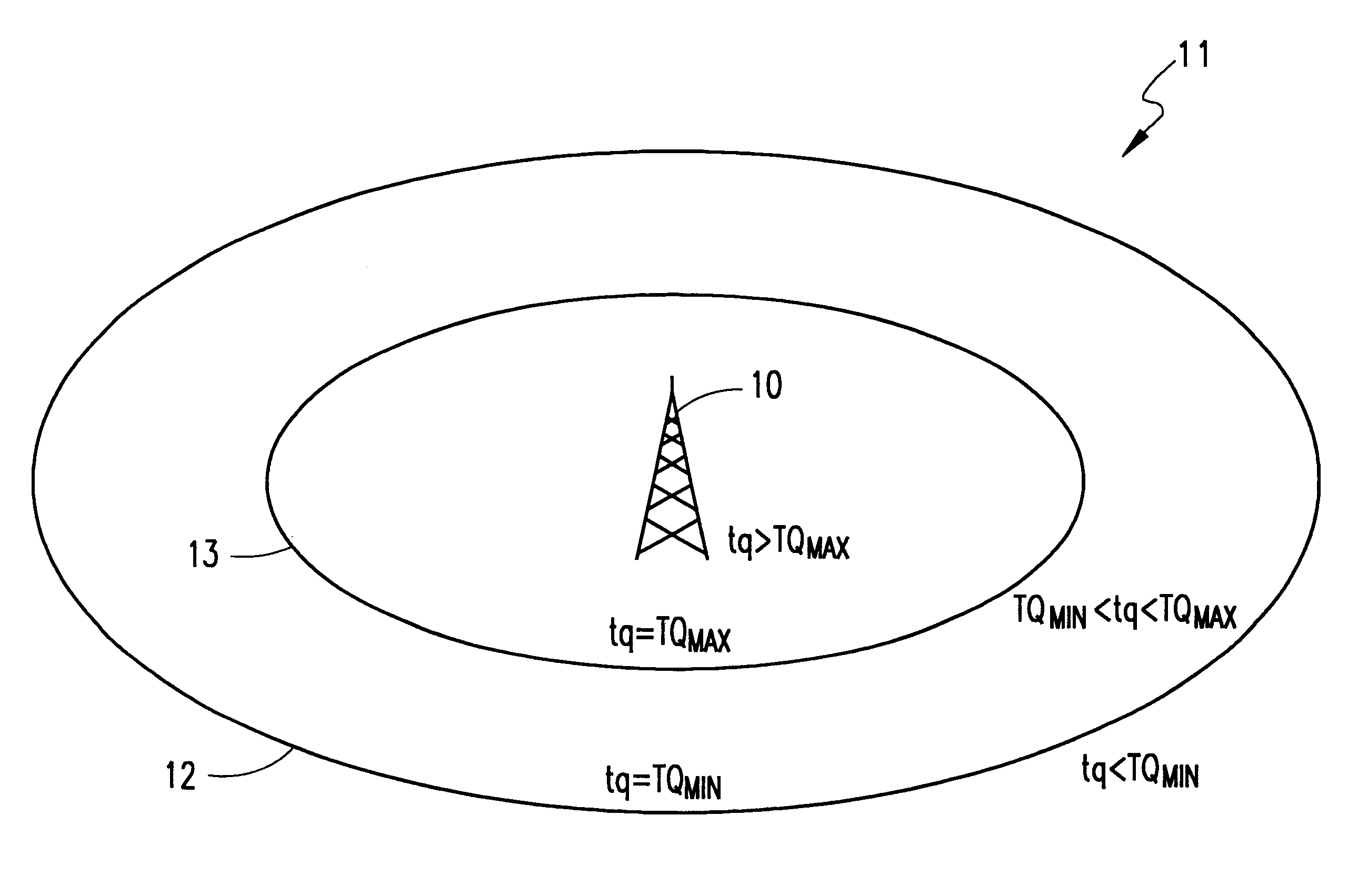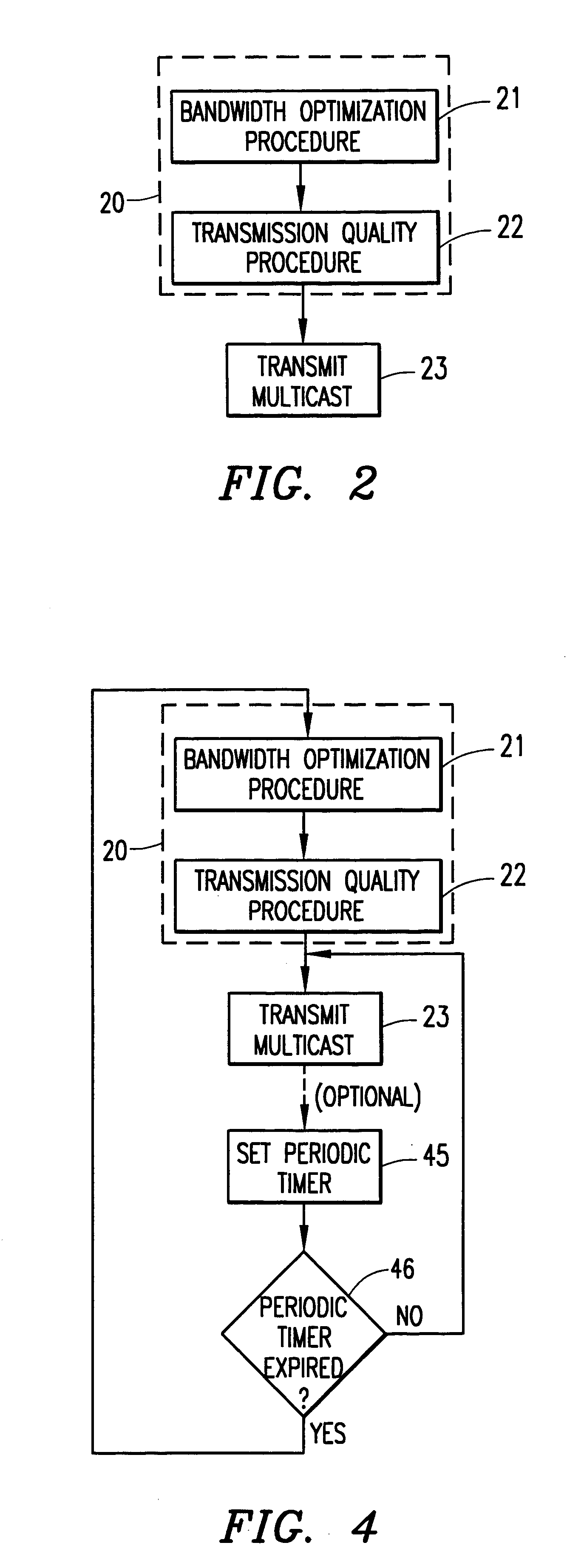Method of broadcasting a quality over-the-air multicast
a multicast and quality technology, applied in the field of telecommunication systems, can solve the problems of insufficient real-time transmission type, insufficient scale of methods, and considerable probability of packet loss
- Summary
- Abstract
- Description
- Claims
- Application Information
AI Technical Summary
Problems solved by technology
Method used
Image
Examples
Embodiment Construction
The present invention determines a downlink transmission mode for use in a multicast broadcast that is the most efficient mode and has the highest probability of reaching a specific group of mobile terminals that are the intended receivers. The method is utilized prior to the multicast transmission of the payload to tune the transmission for the best delivery to all of the receiving subscribers. The invention adapts the broadcast based upon the capabilities of the receivers of the multicast while specifying a minimum broadcast quality. The preferred embodiment of the present invention is described below in terms of the General Packet Radio Service (GPRS).
Without the present invention, when an operator has a need to push data to a group of subscribers, the operator may attempt to send the data, but has no way of knowing what bit rate to use. Most likely, the operator will send the data at the optimum bit rate to produce the best transmission quality. But in any transmission of data, ...
PUM
 Login to View More
Login to View More Abstract
Description
Claims
Application Information
 Login to View More
Login to View More - R&D
- Intellectual Property
- Life Sciences
- Materials
- Tech Scout
- Unparalleled Data Quality
- Higher Quality Content
- 60% Fewer Hallucinations
Browse by: Latest US Patents, China's latest patents, Technical Efficacy Thesaurus, Application Domain, Technology Topic, Popular Technical Reports.
© 2025 PatSnap. All rights reserved.Legal|Privacy policy|Modern Slavery Act Transparency Statement|Sitemap|About US| Contact US: help@patsnap.com



